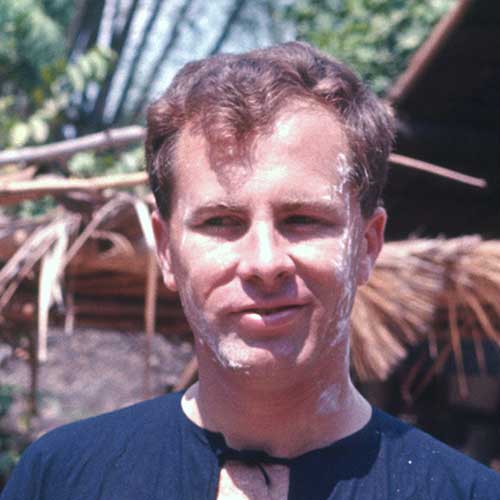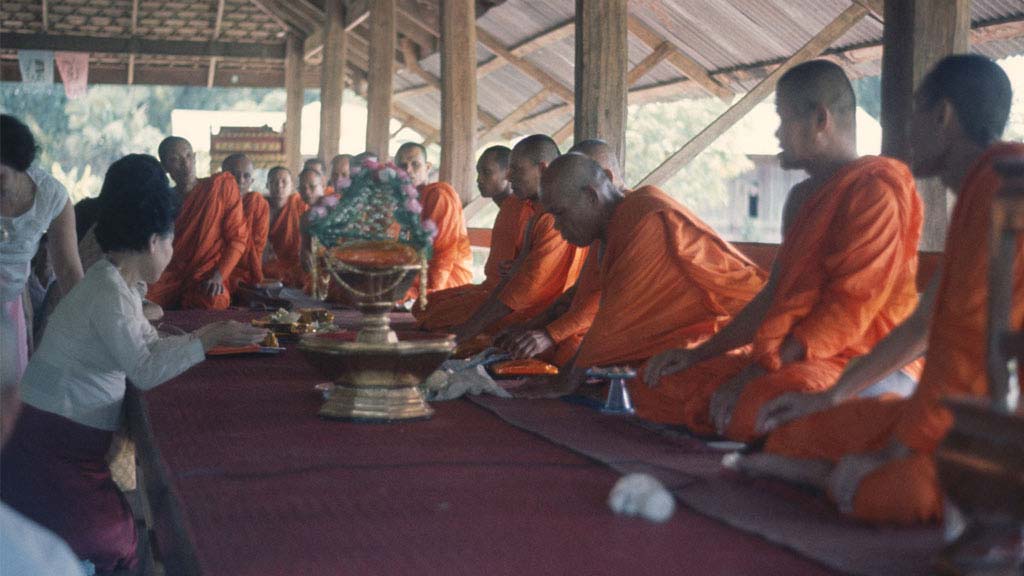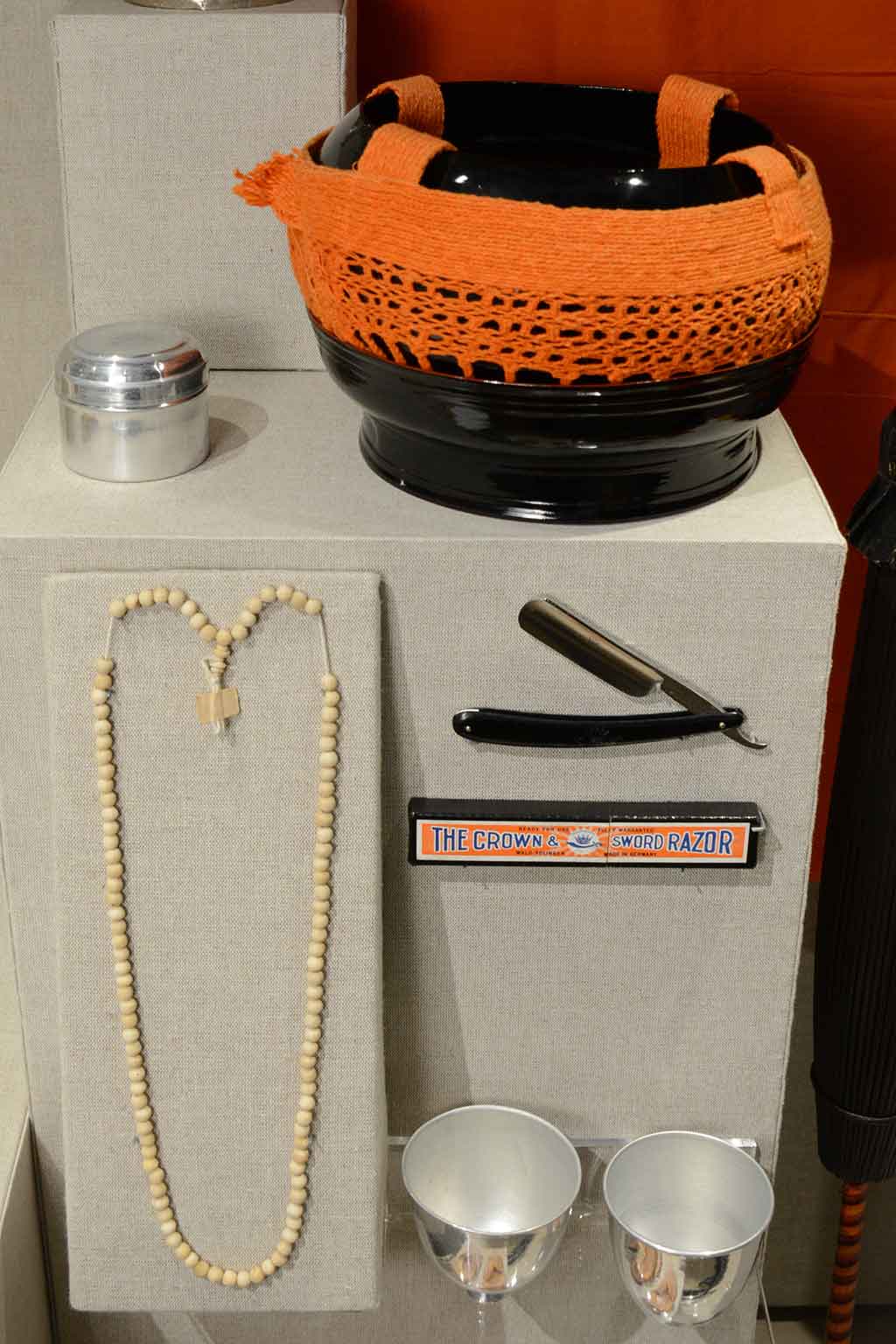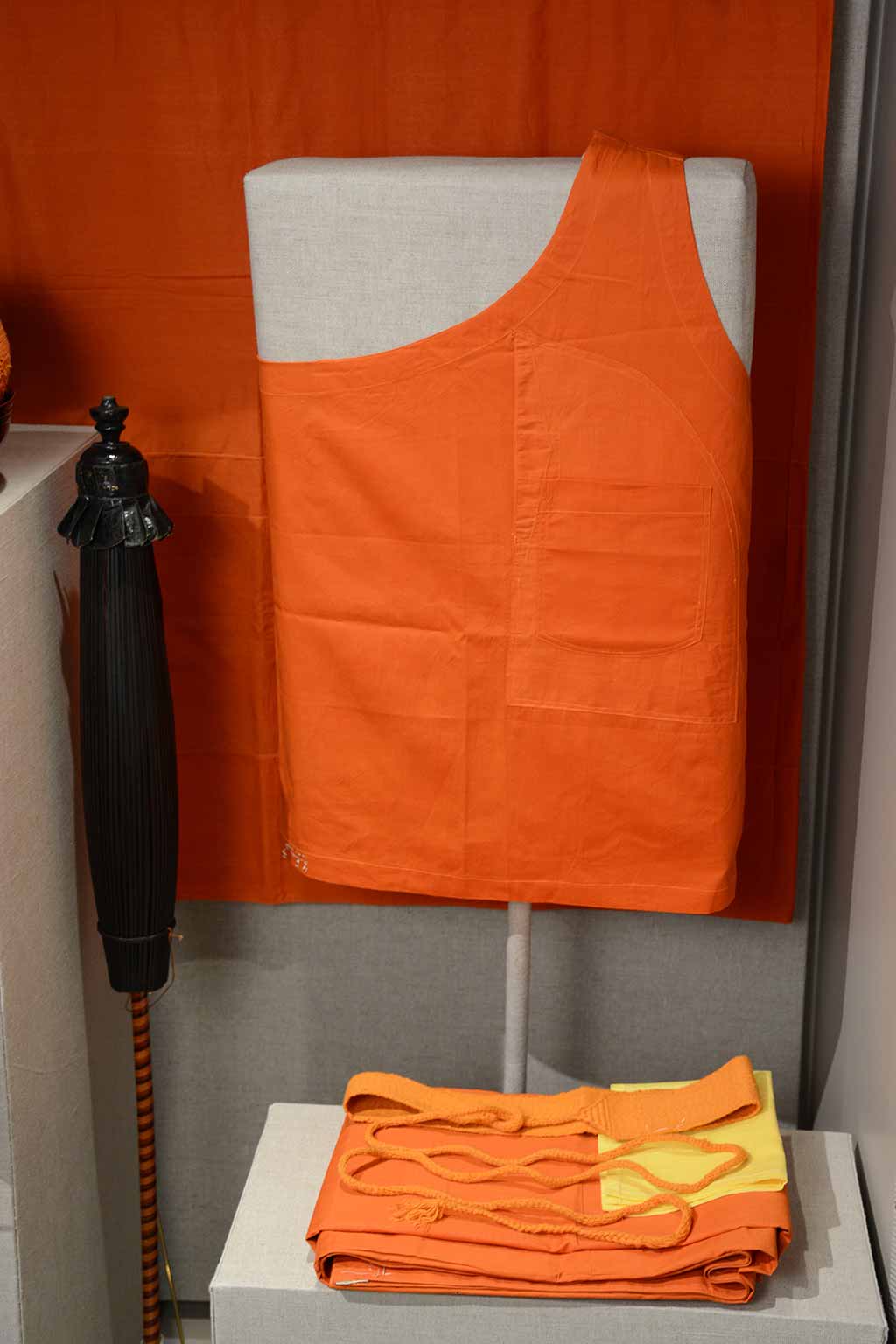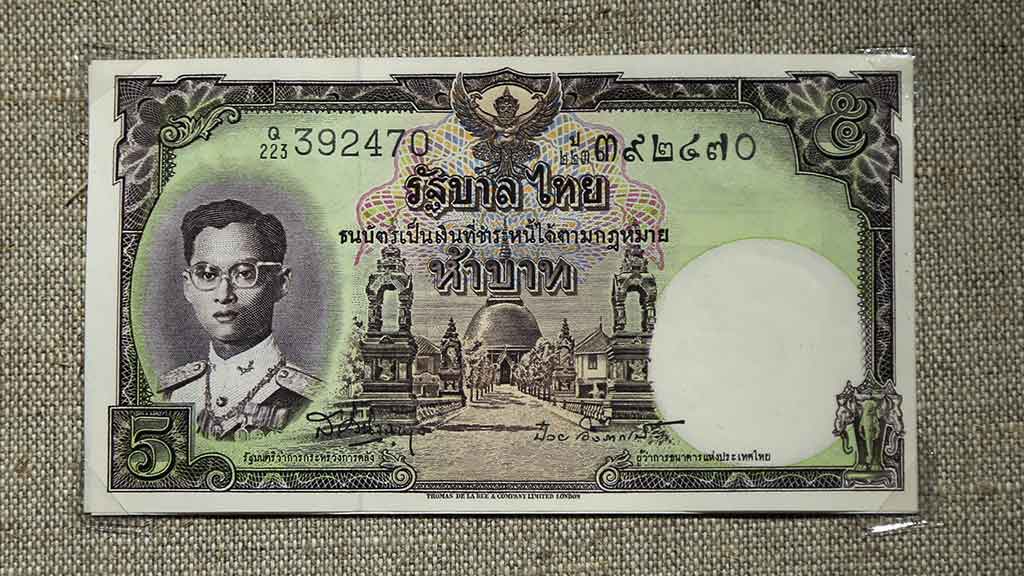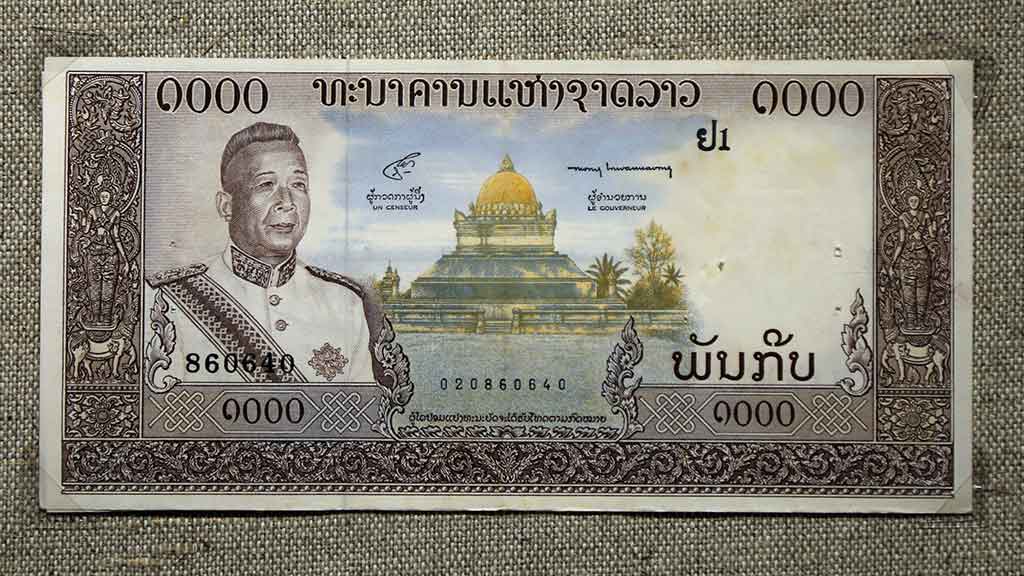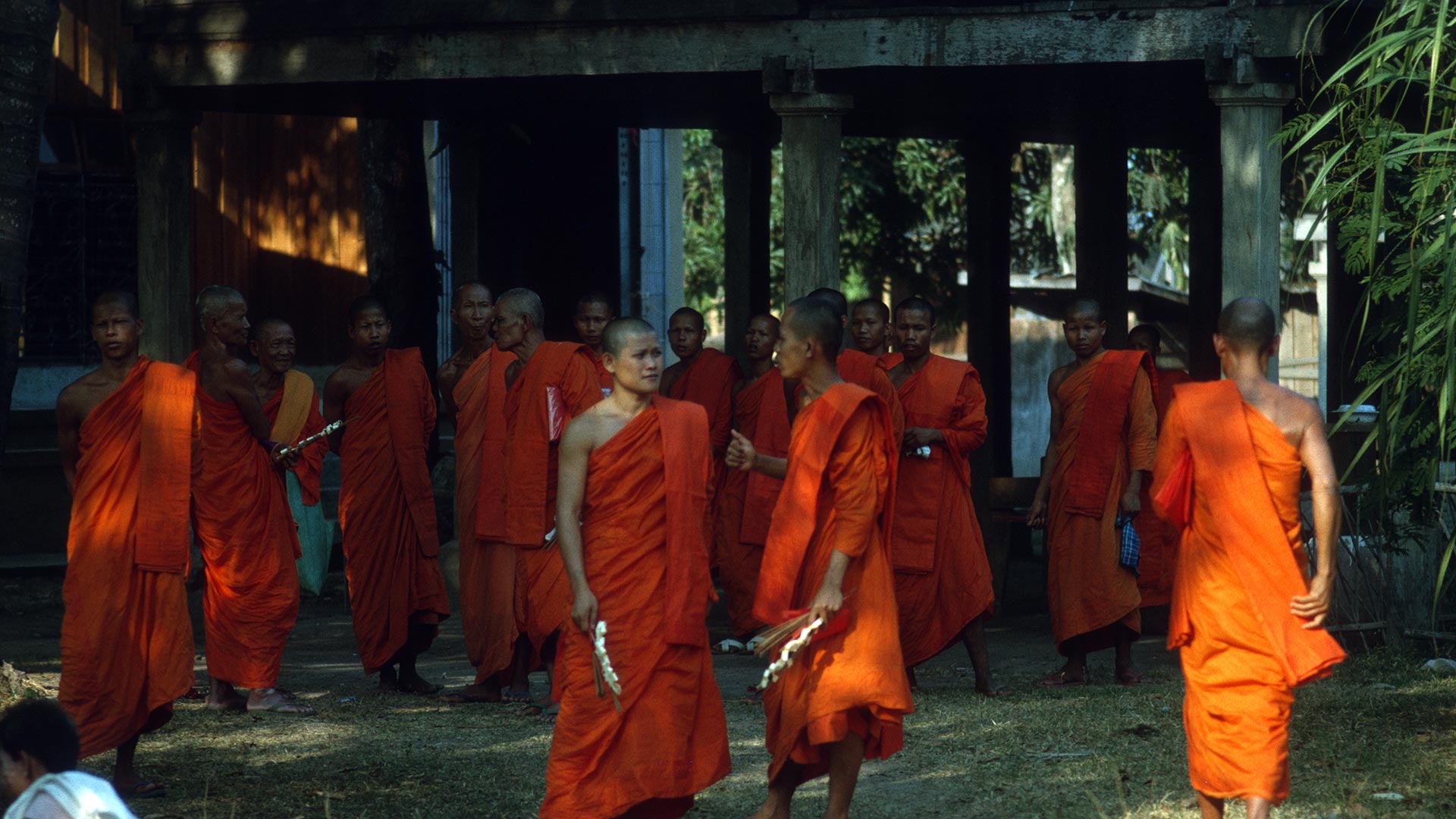
Buddhism in Mid-20th Century Thai Villages
Buddhism, originally a sect of Hinduism, was spread from India throughout Asia by religious teachers, commercial contacts, and royal conversion and patronage. It reached mainland Southeast Asia in its Theravada form between 600 and 1200 CE and today is the dominant religion of Myanmar (Burma), Thailand, Laos, and Cambodia. Another variant, Mahayana Buddhism, is found in Vietnam and in Central and East Asia.
Like Hinduism, Theravada Buddhism holds a belief in the law of punishment and rewards leading to reincarnation (karma), but the two differ in important ways. Hinduism combines various traditions, philosophies, rituals, devotion to deities (such as Vishnu, Shiva, and Ganesha), and practices of asceticism (self-discipline). It is rooted in notions of purity and impurity that are reflected in the caste system. The Lord Buddha accepted karmic reincarnation and personal duty, but he rejected the caste system, animal sacrifice in rituals, and extreme asceticism. He taught a practical way to gain cessation of desire and release from suffering through right thought and action rather than a complex theology.
Articles in this Series
These 5 photo essays from our blog concern several aspects of Theravada Buddhism in Thailand that relate to Buddhist artifacts on display in the Southeast Asia and Oceania: "Crossroads" exhibit:
The Theravada Monk
Theravada emphasizes personal enlightenment by observing the teachings of the Buddha, monastic discipline, and making merit by service to monks and to others. All men are expected to be ordained as monks at some time in their lives, often while they are young. The duration of time spent in study and meditation as a monk may vary from months to years. This activity earns men merit toward rebirth; women earn merit by ordaining sons as monks, giving alms to monks, and participating in diverse religious ceremonies. The expansion of education—particularly higher and professional education—in the Theravada countries can lead men to defer becoming monks into adulthood, at which point they must receive permission from spouses to do so.
Monks observe seniority in rank, and Thai laypeople generally value and honor seniority based upon age and social position. Novices may stay at a monastery only for a 3-month rainy season to learn personal discipline and the basics of Buddhism, as well as to memorize a few texts to recite in ritual. Ordained monks go into deepter textual study and discipline, which includes learning Pali, the ancient Indian language of Theravada Buddhism used today only by monks in study and in ceremonial chants.
A Reservoir of Merit
The monk plays a central role in Theravada Buddhism by providing laypeople with a "reservoir of merit." Individuals earn religious merit (bun) toward reincarnation by having their sons ordained as monks, by giving gifts to monks and to temples, by giving food to monks who walk the streets and paths in the morning near their temples, and by sharing food with monks at various temple festivals. Monks also inspire religious life, teach about Buddhism, counsel the faithful, and sometimes help to sponsor development projects such as hospitals or bridges.
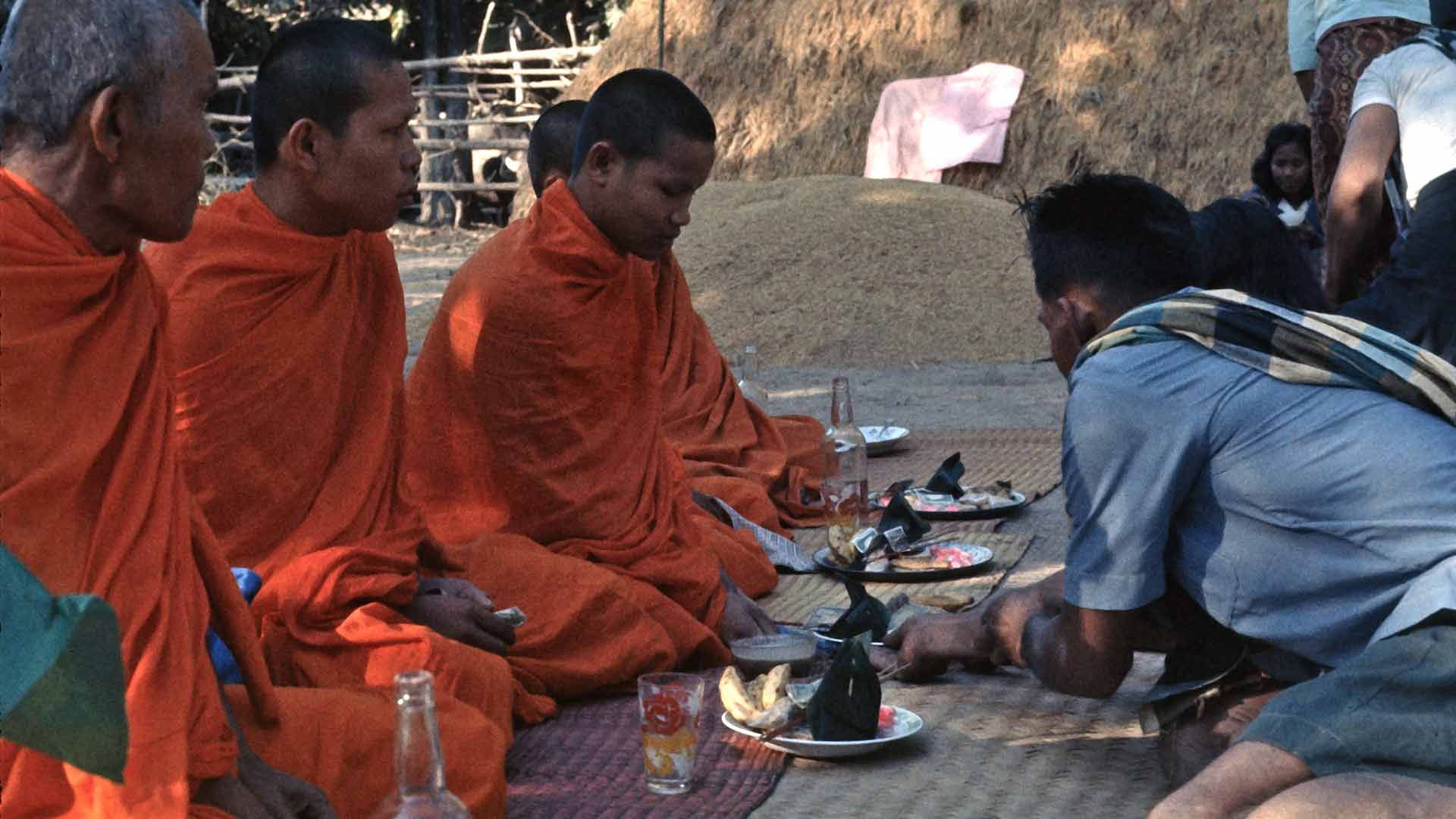
Southeast Asia and Oceania: "Crossroads"
The photos below show the Buddhist objects on display at the Museum.
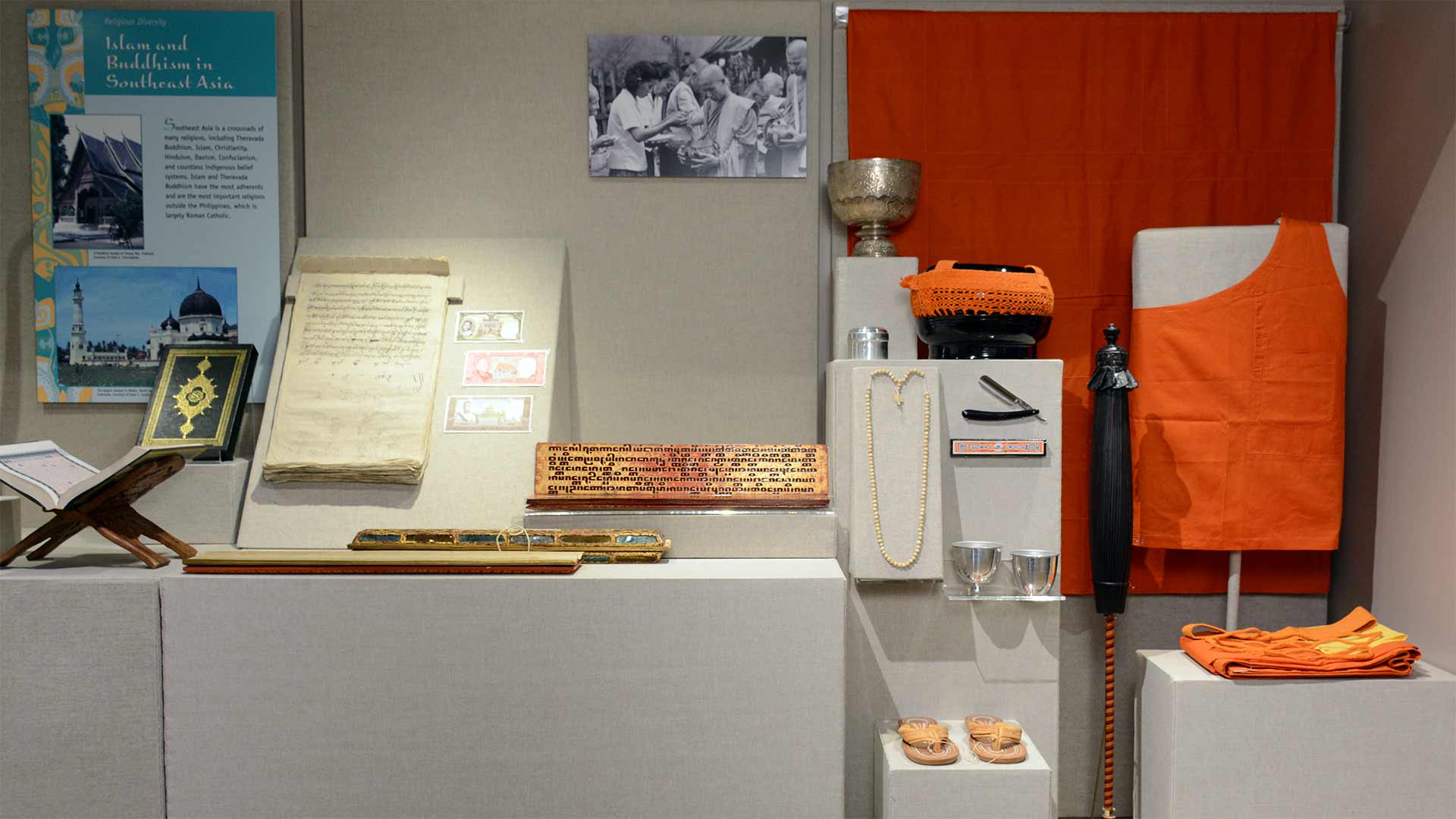
One group of items shows the various possessions of a monk that are gifted to him by his family or other sponsors at the time of his ordination: the 3-part monk's robe (an undergarment, a double waist cloth, and an upper robe), an umbrella, an alms bowl with its sling, a razor (with a box) and whetstone for his head shaving, a water filter and drinking cups, prayer beads, and sandals. He also receives a needle and thread and a large ceremonial fan (not on display). The ceremonial fans of monks are shown in the photo essay on the district funeral.
Also on display is a formal silver rice bowl in the central Thai style, shown in the photo in the exhibit of a line of monks receiving gifts of rice from a group of women. A third display in the exhibit shows Thai and Burmese books of different traditional types concerning Buddhist rituals, including that of ordination, astrology, and indigenous medicine. These would be kept in a temple's library building and brought out for certain occasions.
In Southeast Asia, kings have been the patrons of Buddhism. Currency often features a picture of a king beside a picture of a Buddhist temple or shrine, as in the Thai 5 baht bank note on display. This exhibit has Thai and Lao currency of this type.
Thai kings have been required to conduct regular Thot Kathin ceremonies in the Bangkok region. The importance is also reflected in pictures of temples or shrines on currency. In other parts of the Workman Gallery of Asian Cultures, there are examples of statues of the Lord Buddha from East and Southeast Asia.
Explore More
Articles in this Series
Acknowledgements
The Museum thanks the efforts of Clark E. Cunningham, Professor Emeritus of Anthropology and Spurlock Museum curator, for contributing photos and writing articles for this online exhibit.
Professor Cunningham's experiences in Asia in 1955–1956 led to a senior thesis titled "The Postwar Migration of the Toba Batak to East Sumatra". After receiving his DPhil in Anthropology at Oxford University, Clark conducted research and taught in Thailand from 1968 to 1970, as part of an Illinois-Chiang Mai joint project. Material collected during this time was the inspiration for this online exhibit.
Other significant contributors to the creation of these essays include Jessica Followell, Registration Associate, Photography and Image Rights; Jack Thomas, Director of Information Technology; and Beth Watkins, Education and Publications Coordinator.
